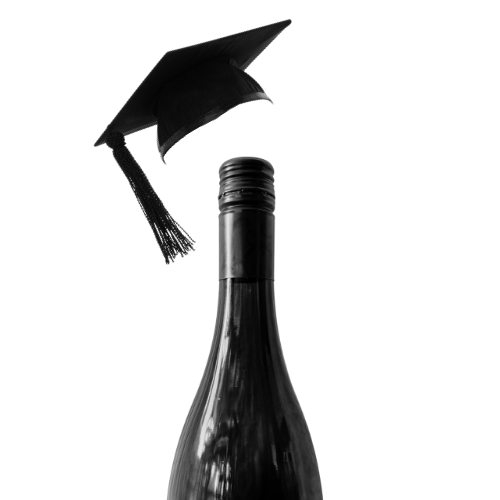
Common Wine Myths: Busted
-
THE REALITY: While there are those rare "supertasters" who can pick up on a wine's numerous aromas, most of us are not going to pick up on 20-odd aromas and flavors in a wine. We all have different things that we’re attuned to. That also means that there are aromas our noses will struggle to pick up on, no matter how much Flonase we shoot up our nostrils.
Wine is a product of biology, chemistry, agriculture, art, a certain modern-day alchemy, and the occasional happy accident. By calibrating your palate, you are learning to detect the various chemical compounds and how they express themselves in a wine: the esters, aldehydes, phenols and yes, ethanol. It means broadening your tastes. Be adventurous and taste all manner of foods, spices, and herbs. (And yes, some somms have allegedly even licked rocks to learn what petrichor tastes like). Pay attention to your own intuition and sense memory.
For instance, ever walked into a barn? What do you smell? Hay, leather, wood, flint, animal musk, and yes, probably horseshit. Surprisingly, you may get whiffs of any or all of that in a glass of wine, especially if has some age on it and/or it's been aged in oak and/or it’s simply gone bad.
Pay attention not only to what your tongue is doing but what images are flashing through your mind as you taste. The minute I stuck my nose into one particular glass of wine, I immediately flashed to opening up a baker’s cupboard of dried fruits. Most of the aromas were of — wait for it — dried fruits.
THE TAKEAWAY: Trust your own senses and relax! No one's expecting you to be a master sommelier. Let the wine tease out sense memories and unexpected associations.
-
THE REALITY: Many of the world's wine-producing regions produce high-volume, inexpensive wines. If you want something that goes down easy, that you can swish and forget--and doesn’t taste too much like vinegar--there are several "porch pounders" to choose from under $10.
If you want something of a higher quality to go with that holiday meal or share with friends, you can still find many options under $25. Most of the wines we reach for during the week are light and simple and fruity, many of them from California, Washington, or Oregon, or the major French or Italian appellations. We never spend more than $25 on any one of them. In most cases, the wines are less than $20. (Think: Central Coast and Paso Robles, California; Beaujolais or Cotes de Bordeaux from France; and Chianti from Italy.)
If you have a local wine shop, I highly recommend shopping there instead of a grocery store. A wine specialist should be able to steer you in the right direction, based on your taste preferences and price point, and shouldn’t shame you for grabbing something light and inexpensive.
THE TAKEAWAY: Stay in your budget and find something you actually like, not something you think you should like.
-
THE REALITY: Most wines are produced in simple, early-drinking styles and are best consumed within one to three months of purchase. (Be sure to store it on its side to keep the cork in contact with the wine, keep it out of heat and sunlight, and store it in a wine fridge or at room temp, where the temperature stays fairly consistent and cool.)
More complex and highly structured wines such as Cabernet Sauvignon may have more aging potential and may be safe to drink six months to a year from purchase.
Only higher end and collector's wines have the structure (acidity, tannins, body) and fruit concentration to be aged long-term.
THE TAKEAWAY: Drink now before your wine turns to vinegar!
-
THE REALITY: While sulfites can trigger allergic and/or anaphylactic reactions, the naturally occurring histamines in wine are the more likely culprits.
THE TAKEAWAY: If you find yourself suffering headaches and/or other allergy symptoms after consuming wine, limit your intake and consult an allergist to pinpoint what's causing the post-indulgence misery. In the meantime, try organic/natural wines that are labeled “allergen/histamine free.”
As you imbibe, make sure to drink plenty of water. Your headache may be the result of a hangover and/or dehydration. We try to drink 6 to 8 ounces of water for every serving of wine.
-
THE REALITY: Okay. Yes. Drinking, especially in higher quantities, can slow the metabolism and add calories to your daily intake. Drinking also increases your cravings for high-fat and high-sodium foods.
However, a glass of wine contains roughly 100 to 130 calories, less than a glass of beer and no more than many mixed drinks. (Neat pours and shots of pure spirits such as vodka typically contain fewer calories.)
THE TAKEAWAY: Drink in moderation. If you're watching your waistline, steer clear of sweet/dessert wines (which have more residual sugar) and reach for dry white and red wines.
